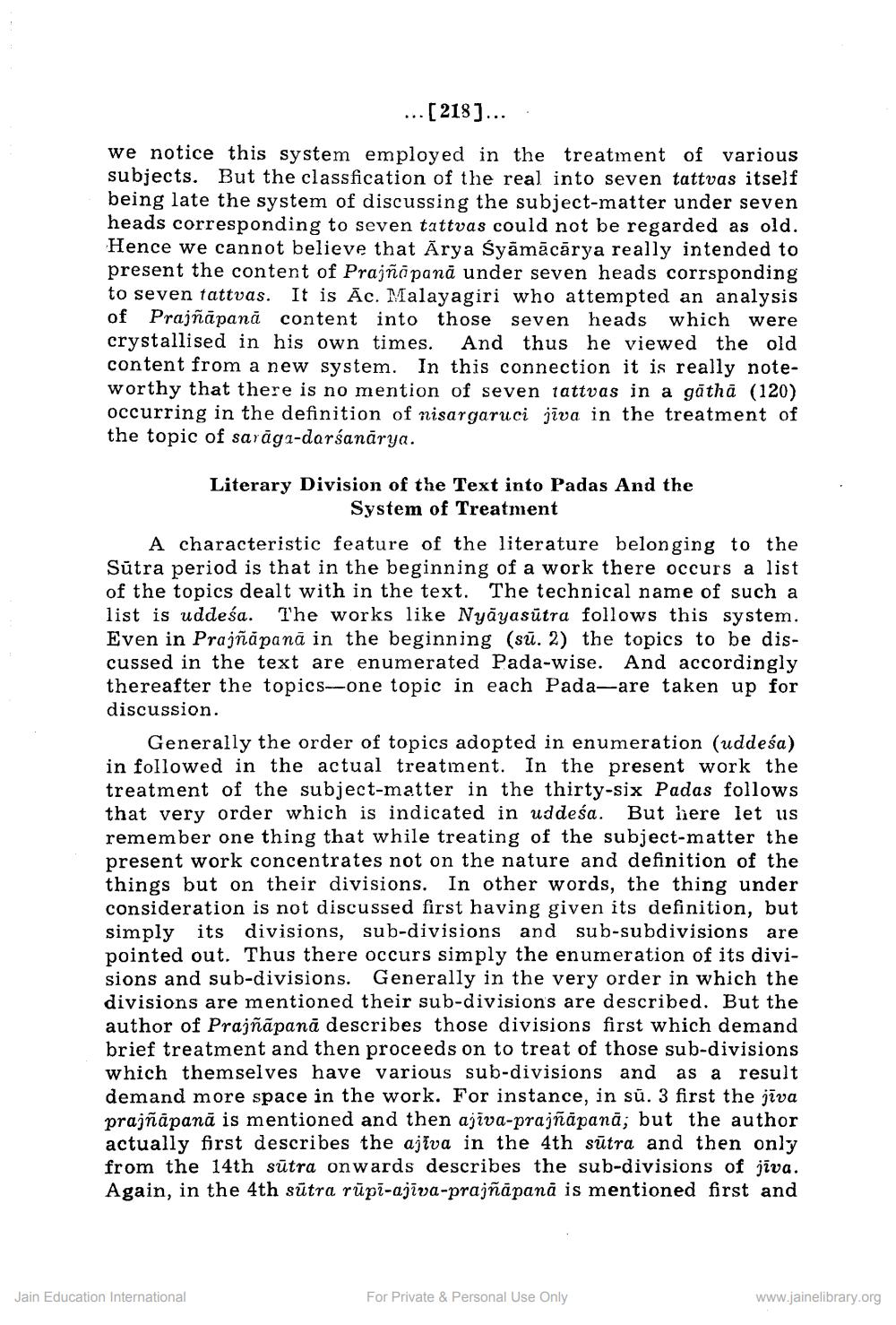________________
... [218]....
we notice this system employed in the treatment of various subjects. But the classfication of the real into seven tattvas itself being late the system of discussing the subject-matter under seven heads corresponding to seven tattvas could not be regarded as old. Hence we cannot believe that Arya Śyāmācārya really intended to present the content of Prajñāpanā under seven heads corrsponding to seven tattvas. It is Ac. Malayagiri who attempted an analysis of Prajñāpanā content into those seven heads which were crystallised in his own times. And thus he viewed the old content from a new system. In this connection it is really noteworthy that there is no mention of seven tattvas in a gāthā (120) occurring in the definition of nisargaruci jīva in the treatment of the topic of sarāga-darsanārya.
Literary Division of the Text into Padas And the
System of Treatment A characteristic feature of the literature belonging to the Sūtra period is that in the beginning of a work there occurs a list of the topics dealt with in the text. The technical name of such a list is uddeśa. The works like Nyāyasūtra follows this system. Even in Prajñapana in the beginning (sū. 2) the topics to be discussed in the text are enumerated Pada-wise. And accordingly thereafter the topics--one topic in each Pada-are taken up for discussion.
Generally the order of topics adopted in enumeration (uddeśa) in followed in the actual treatment. In the present work the treatment of the subject-matter in the thirty-six Padas follows that very order which is indicated in uddeśa. But here let us remember one thing that while treating of the subject-matter the present work concentrates not on the nature and definition of the things but on their divisions. In other words, the thing under consideration is not discussed first having given its definition, but simply its divisions, sub-divisions and sub-subdivisions are pointed out. Thus there occurs simply the enumeration of its divisions and sub-divisions. Generally in the very order in which the divisions are mentioned their sub-divisions are described. But the author of Prajñāpanā describes those divisions first which demand brief treatment and then proceeds on to treat of those sub-divisions which themselves have various sub-divisions and as a result demand more space in the work. For instance, in sū. 3 first the jiva prajñāpanā is mentioned and then ajīva-prajñāpanā; but the author actually first describes the ajiva in the 4th sūtra and then only from the 14th sūtra onwards describes the sub-divisions of jīva. Again, in the 4th sūtra rūpi-ajīva-prajñāpana is mentioned first and
Jain Education International
For Private & Personal Use Only
www.jainelibrary.org




